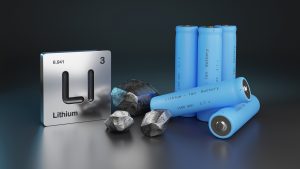The Energy Futures Lab explores Canada’s potential position as a global leader in the clean energy transition.
In the global race to reach net zero and decarbonise, Canada should be the bookie’s favourite. Long renowned as a nation of both abundant natural resources, but also resourcefulness with a storied history of energy leadership, the country is poised to lead the clean energy transition. Yet it still feels like Canada is on the starting line waiting for the gunshot.
There is growing interest in both public and private opportunities and investment, especially pertaining to critical minerals, but is it accelerating enough to make Canada competitive on a global scale? With the race far from over, what will it take to put Canada in pole position?
The transition to a low-carbon economy is unlikely to be a gentle affair, and like all ‘wicked’ problems, it is one that faces many challenges. As we speed towards 2030, with lofty climate goals to reach, efforts in decarbonisation are accelerating. As they speed up, we will need stewards to keep the car on the track.
Changing the lens on the global clean energy transition
The global energy transition requires more than just technological advancement. It involves a multi-faceted approach that recognises the complexities between our social systems and our energy system. As a convenor, connector, and catalyser of innovative energy system initiatives and solutions, the Energy Futures Lab supports change-makers in collaboratively exploring how to leverage Canada’s assets and innovation capacity to accelerate an inclusive and equitable transition to a prosperous net zero future.
Like all complex challenges, there is no simple answer, but the actions being taken today have a tangible impact on the energy system of the future.
As Canada’s Minister of Natural Resources, Jonathan Wilkinson, boldly stated recently: “There is no energy transition without critical minerals, and this is why critical mineral supply chain resilience is an increasing priority for advanced economies.”
Lithium’s role in a net zero future
In today’s global energy and climate reality, everyone is speaking about energy security. What does that mean for Alberta and Canada? The answer lies in the opportunities before us. It will mean developing net zero energy sources that are close to home, reliable, and predictable in cost. There is no shortage of homegrown opportunities when it comes to producing products for emerging markets such as battery metals. Innovative technologies are poised to turn raw resources into the commercially-viable reserves required to create a national, or North American supply chain for critical minerals like lithium.
The discovery of lithium is not new, but our relationship with lithium is rapidly changing. Canada has set ambitious zero emission vehicle (ZEV) targets and the demand for electric vehicles (EVs) is reaching critical mass. Scientists began working on lithium-ion batteries in the 1970s, but the first commercial lithium-ion battery did not hit the market until 1991. Fast-forward 30 years and batteries are set to play an integral role in the transition to net zero by mid-century. Thanks to factors including improved battery technology, policy support, and wider availability of charging infrastructure, EV sales are surging.

The Alberta advantage
The need for responsibly-sourced lithium has never been greater. Most lithium today originates from either Australia’s hard rock deposits or South America’s salt flats. Alberta’s oil fields hold abundant, yet low-grade deposits of lithium in subsurface brine, but so far, it has been overlooked as industrial waste. With new processing technologies and growing concerns about the security of global supplies, this is set to change.
In 2017, few people knew about this untapped opportunity. It took individuals like Liz Lappin, who joined the Energy Futures Lab Fellowship, to help spread the word. Lappin was well aware of Alberta’s potential, having joined E3 Lithium during their start-up phase. The company was proposing a creative solution to a long-standing challenge, setting out to demonstrate how Alberta could lean on its existing oil and gas industry to support the creation of a globally competitive, and less environmentally-intensive lithium industry.

The need for an industry organisation to champion the responsible development of a Canadian value chain emerged from a series of workshops hosted by the Energy Futures Lab. A group of first-movers combined resources and eventually sparked the formation of the Battery Metals Association of Canada (BMAC), which developed rapidly in collaboration with the Energy Futures Lab team and Fellowship.
Today, Lappin is the current President of BMAC and firmly believes that this technology is on the cusp of market viability. Lappin stated: “Extraction from wells in lithium-rich formations can put Canada on the map. With a number of projects in development, several with later-stage TRL technology, Alberta lithium could supply battery producers, and Canadian lithium producers could also benefit from preferred trade partnerships to export to European markets.”
When asked what is needed to get there, Lappin acknowledged that: “Commitment from both the private sector and government will be needed along with the deployment of policy instruments. There is a perception that this technology will not be commercial until after 2030, but piloting is expected well in advance of that timeframe and there are already a number of companies bringing it closer to viability.”
Mentioning investments from Alberta Innovates and the Government of Canada in piloting lithium technology as a solid starting point, Lappin was disappointed in the recent exclusion of brine-produced lithium from Canada’s Critical Minerals Exploration Tax Credit but has plans to advocate for its inclusion.
The case for Canada’s battery value chain
To truly grow this industry, however, Canada needs to move beyond its comfort zone. Rather than produce lithium as yet another raw-commodity export, Canadians should be pushing to develop the entire value chain, including manufacturing end products, such as cathodes, anodes, and batteries, for the electrified economy. BMAC has recently released a living ecosystem map showing the volume of activities already underway and outlining the opportunity for a robust domestic value chain.
Canada must aim for a larger piece of the supply chain. According to a recent clean competitiveness roadmap report produced by BMAC, Energy Futures Lab, Transition Accelerator, and Accelerate Alliance, automotive parts and vehicles are the second biggest Canadian export behind oil and gas which makes for a clear economic imperative to develop an EV ecosystem in Canada. Given that the internal combustion engine (ICE) and the oil and gas industry will be disrupted by the energy transition, Canada needs to act fast to replace the value these exports bring to our economy. Developing an EV ecosystem is a once-in-a-generation opportunity to support long-term prosperity in Canada.
The report, A Roadmap for Canada’s Battery Value Chain, outlines priority actions in a national industrial strategy to get the ball rolling and position Canada as a global competitor. The race is truly on to forge a homegrown ecosystem – one that integrates seamlessly into the North American auto sector.
Paving the way
To capitalise on this opportunity, however, the government must step up the way they did a generation ago for the oilsands. “Canada will have to go from producing a few thousand EVs to producing 1.3 million EVs in eight years and 2.3 million EVs in 19 years. To provide a supply chain that meets these objectives will require mining and processing of approximately 200 kilotonnes per annum (ktpa) of elemental lithium,” writes the report’s lead author, Bentley Allan.

Despite the compelling long-term economics of lithium for batteries, some industry investors need help to balance the risks of pioneering a nascent industry. One of the calls to action from the report is the creation of public-private-Indigenous partnerships.
The Energy Futures Lab held a series of working groups with the BMAC community, which according to Allan, validated this necessity: “The industry believes we can achieve these battery and EV supply chain goals— and industry is ready to work in partnership with the government, Indigenous communities, civil society, and finance.”
In light of recent supply and demand issues, North American lithium-battery suppliers should be looking to reliable, local sources. The moment is at hand for Alberta and Canada to capture the abundant economic opportunities of lithium and battery metals in the world’s clean energy future.

Future-fit hydrocarbons in the global energy transition
That future looks promising, but it is contingent on securing the right catalytic investments, and getting the right policy levers in place. Alberta’s energy industry faces significant challenges relating to global investment due to the growing emphasis on transition investment opportunities. To address this challenge, the Energy Futures Lab is exploring opportunities for financing future-fit hydrocarbons – products and industries that build on Canada’s hydrocarbon assets in a way compatible with meeting climate targets such as battery metals, but also technologies like clean hydrogen, bitumen beyond combustion, geothermal energy, and carbon capture utilisation and storage (CCUS).
Along with an array of partners, the lab has created and shared a set of guiding criteria that establish a starting point for collaborative future-fit hydrocarbon development for a net zero world and attracting sustainable investment through their Energy Futures Policy Collaborative (EFPC).

The EFPC framework identifies strategic areas where governments need to align and accelerate policy development to amplify climate action while continuing to reap the economic benefits of hydrocarbon activity.
These proposals can support the sector as a whole – not just companies – to attract investment to projects aligned with net zero emissions goals, as well as meet evolving expectations for energy development. Focusing on Alberta, it is an approach that considers new development as a source of future growth, job creation, and community resilience. Viewing the full picture helps to put the opportunities into perspective and looking at opportunities beyond the emerging technological innovations requires us to look through a social innovation lens. What is needed to remove the remaining barriers inhibiting the evolution in energy that is already underway in the province?
The global energy transition offers a huge opportunity for Alberta but capturing this requires careful co-ordination and navigation of provincial, federal, Indigenous, municipal, and other stakeholders to ensure the energy system of the future can benefit a wide array of interests. The ambition of growing future-fit hydrocarbon industries, such as battery metals, has the potential to bridge a number of these divides, in that it acknowledges a new reality for the energy sector and stands as an invitation for those connected with resource development to imagine new possibilities. Efforts are underway to ensure that battery metals contribute to Canada’s prosperity and the global supply required to advance the energy transition.
About the Energy Futures Lab
The Energy Futures Lab is an award-winning coalition of diverse innovators and leading organisations working to accelerate the transition to a more sustainable, prosperous, and inclusive energy future.
Energy Futures Lab
www.energyfutureslab.com
https://www.linkedin.com/company/energy-futures-lab/
https://www.facebook.com/LabEnergyFutures/
https://twitter.com/LabEnergy
Please note, this article will also appear in the eleventh edition of our quarterly publication.









